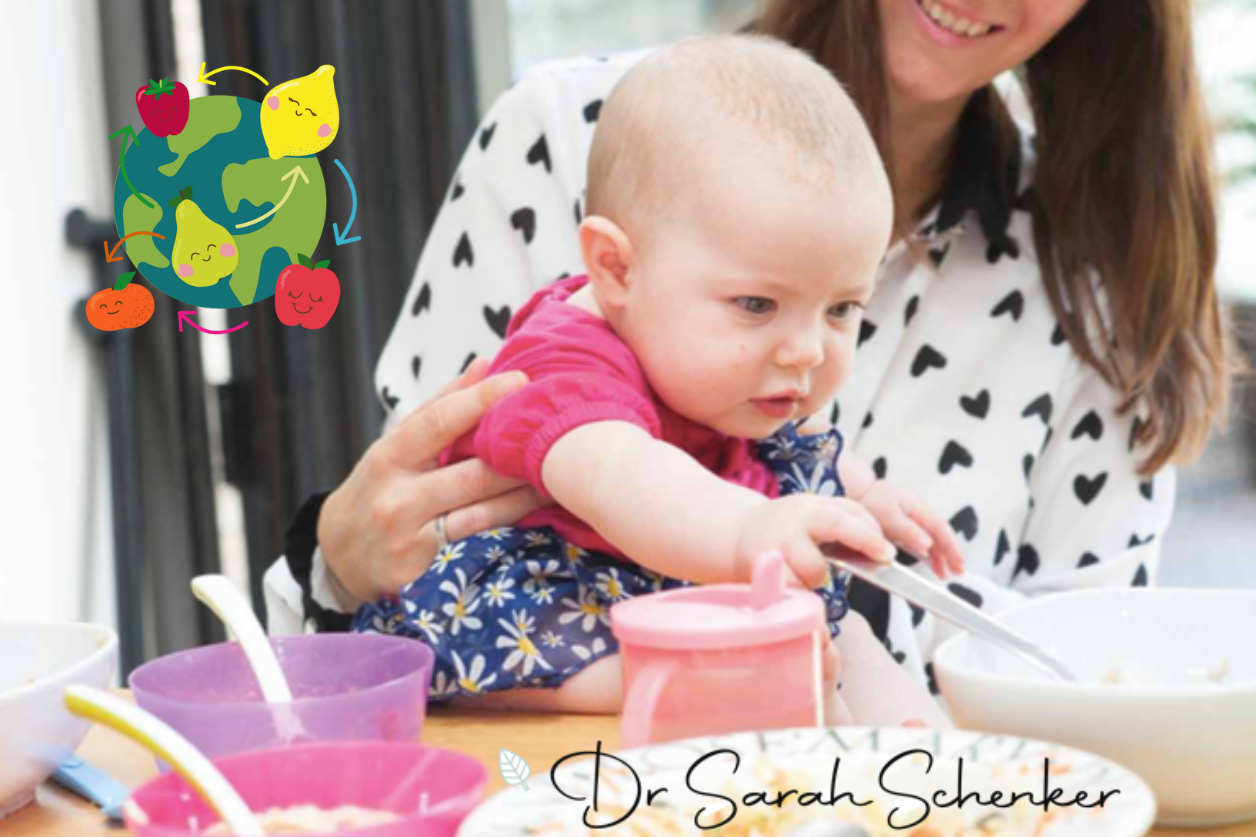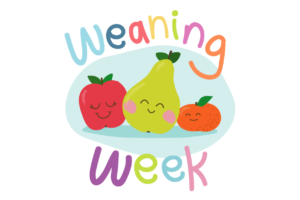
Sharing foods with your weaning baby
Starting weaning is a milestone and a magical time as you watch your baby start to enjoy new tastes, textures and flavours. But it is often a time when you start to neglect your own diet as suddenly there seems to be yet another time consuming task to contend with. Preparing your baby’s food, whether you decide to offer purees or go straight in with baby led weaning, involves planning, shopping, and preparing. Sharing foods and ingredients with your baby not only saves you time and effort, but also offers a number of benefits for both of you.
Benefits of sharing foods
Weaning generally starts around 6 months and at a time when your body is still recovering, so what you eat is crucial to maintaining energy levels and good mental health. It’s also the perfect opportunity to strengthen the bond between you and your baby through sharing food, so it makes sense to eat the same food you offer them, particularly as you are offering the healthiest of ingredients that will benefit you both.
That doesn’t mean you have to start consuming purees! But it makes sense to take one key ingredient and make it work for both of you with minimal effort and maximum nutritional benefit.
Many new mums are keen to keep their baby healthy and naturally put all of their energy into preparing a nutritious meal solely for them. Feeling exhausted later, they are likely to grab sugary snacks to keep them going. In fact, babies are keen to socialise and eat with others where they can observe and learn, which can reduce the risk of fussy eating later. If you’re sharing foods with your baby and eating together you will nourish your body, avoid sugar spikes and feel so much better. It’s a win-win!
Ideas for sharing foods with your baby
Avocado
Avocados are one of the best starting foods to offer your baby. They contain healthy, unsaturated fats that are needed for healthy brain and cognitive development, and for the healthy growth of the nervous system. They have a mild, not-too-sweet taste and a natural creamy consistency that can be easily digested by your baby’s still-developing gut.
For you, they are a great source of vitamin E – a powerful antioxidant that boosts your immune system and helps to keep your skin healthy. The healthy fats they provide help to prevent inflammation in the body and assist in the absorption of other vitamins and antioxidants from your food. There are loads of recipes for sharing foods and meals using avocados…
To prepare:
Take one avocado and slice it lengthways around the stone, then twist apart. Remove the stone and score through the flesh lengthways. Use the tip of the knife to gently run along the inside of the skin and the slices of avocado should fall away.
For your baby
Take three slices of avocado, roughly chop and place in a small bowl. Mash with a fork or the back of a spoon to form a creamy paste. Add 2 tbsp of your baby’s usual milk and stir well to form a smooth runny consistency.
For you
Create a filling, nutritious lunch by adding a few ingredients and making a chicken and avocado wrap.
Cut up a spring onion into a bowl, then add a roughly chopped tomato, cooked chicken breast, and the rest of the avocado. Mix in about 1 tbsp of creme fraiche (you can also add chilli sauce if you fancy it). Spread the mixture onto a tortilla and roll it up into a wrap.
Courgettes
It might surprise you to learn that courgettes are a lot more nutritious than they look! They contain good amounts of vitamin A, magnesium, folate, potassium, copper, and phosphorus, as well as smaller but significant amounts of omega 3 fats and B vitamins.
Although we’re not counting calories, it’s worth noting that courgettes are particularly low at only 15 calories each. Courgettes also play a role in promoting heart health. The nutrients magnesium and potassium help to normalise blood pressure, while vitamins A and C stop the oxidation of bad cholesterol in the blood, reducing the risk of heart attacks.
To prepare:
Preheat the oven to 200C/gas 6. Split two courgettes lengthways using a sharp knife. Use a teaspoon to scoop the seeds from the middle of each courgette half, then place them in a large baking tray.
For your baby
Take a heaped tbsp of ricotta cheese from a 250g tub and mix with two cubes of butternut squash puree. Don’t worry if they are not fully defrosted, they will easily melt in the oven. Spoon the mixture into one half of the courgette.
For you
Sharing foods with your baby is easy with versatile ingredients like courgettes and chickpeas. Try making yourself a lovely light lunch of cheesy chickpea courgettes.
You’ll want to start by de-seeding and finely chopping a chilli. Roughly tear a handful of fresh herbs (mint, basil, parsley, etc.) and combine with the rest of your ricotta cheese. Add around 2 tbsp of tinned chickpeas, the zest of a lemon, and salt and pepper to season. Pile the stuffing into the 3 remaining courgette halves, sprinkling parmesan on top. Bake for 35 minutes or until the topping is golden and the courgettes are tender.
Prunes
Prunes are a great food for your baby. They provide iron, which your baby needs after 6 months as body stores start to deplete, and they also contain vitamin C which helps the absorption of the iron into the body. As your baby starts solids, they may experience a little constipation (this is perfectly normal) and prunes are a good way to help alleviate the problem. You only need a small amount as a little goes a long way.
Prunes contain two types of fibre – soluble and insoluble. The soluble fibre in prunes promotes a sense of satisfied fullness after a meal by slowing the rate at which food leaves the stomach, so prunes can also help prevent overeating and weight gain. The insoluble fibre can help to lower cholesterol levels in the blood.
To prepare:
Place around ten pitted prunes in a small saucepan with 2 frozen cubes of pear puree and a splash of water, then bring to the boil. Reduce the heat and allow to simmer for 8-10 minutes. Remove the saucepan from the heat and allow to cool. Transfer into a food processor and blend into a smooth paste.
For your baby
Place 2 tbsp of Greek yoghurt into a bowl and swirl through 1 tbsp of the pureed prunes.
For you
Have a go at making a yummy chicken and radish salad, using the remaining prunes to make a delicious dressing.
To make the salad, shred a cooked chicken breast and place in a bowl with a couple of handfuls of baby spinach leaves, 1 tbsp of hazelnuts, and 5 radishes (halved). Then, to make the prune dressing, combine the rest of your prune mixture with 1 tbsp of olive oil and a tbsp of sherry vinegar. Whisk together and drizzle over your salad.
About Dr Sarah Schenker
Sarah is one of the UK’s leading dietitians and media spokespeople. She is further qualified as an accredited sports dietitian and registered public health nutritionist. For more recipes and ideas for sharing foods with your baby, check out her book – My Sugar Free Baby and Me.
For more tips and advice, visit out our blog. And don’t forget to follow us on Instagram and Facebook for more #WeaningWeek2023 advice and activities!
Disclaimer: The views and advice given in this article are those of the guest writer and do not necessarily reflect the opinions of Weaning Week or any other organisations represented on this platform

